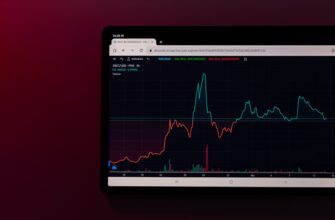Introduction to Range Trading PEPE on a 1-Minute Chart
Range trading PEPE Coin on OKX using a 1-minute timeframe is a high-intensity strategy designed for traders seeking quick opportunities in volatile markets. PEPE, a meme coin known for explosive price swings, often consolidates within predictable boundaries before breaking out. The 1-minute chart amplifies these micro-movements, letting you capitalize on rapid support/resistance bounces. This guide breaks down the exact steps to execute this strategy on OKX—crypto’s leading exchange for altcoin liquidity. Note: Trading carries high risk, especially on short timeframes. Never invest more than you can afford to lose.
Step-by-Step Guide: Range Trading PEPE on OKX (1-Minute Timeframe)
- Set Up Your OKX Trading Interface: Log into OKX and navigate to ‘Trade’ > ‘Spot Trading’. Select the PEPE/USDT pair. Click the timeframe selector and choose ‘1m’. Enable candlestick charts.
- Identify the Range Boundaries: Analyze the last 15-30 minutes of price action. Draw horizontal lines at:
– Support: Where PEPE consistently bounces upward (e.g., $0.00000120).
– Resistance: Where PEPE repeatedly rejects upward (e.g., $0.00000150). - Place Limit Orders at Key Levels:
– Buy: Set a limit order 1-2% above support to catch bounces.
– Sell: Set a limit order 1-2% below resistance to secure exits. - Add Confirmation Indicators: Overlay RSI (settings: 14 period) and volume bars. Enter trades only when:
– RSI crosses above 30 (oversold) near support.
– Volume spikes on bounces. - Manage Risk with Stop-Loss & Take-Profit:
– Stop-loss: 3-5% below entry to limit losses if support breaks.
– Take-profit: At resistance or when RSI exceeds 70 (overbought). - Monitor and Adjust in Real-Time: Watch for breakout/breakdown signals. If PEPE closes outside the range with high volume, exit trades immediately.
Pro Tips for 1-Minute PEPE Range Trading Success
- Trade High-Liquidity Hours: Focus on periods when PEPE volume exceeds $50M/hour (e.g., during US/EU market overlap).
- Use OKX’s Depth Chart: Check order book liquidity near support/resistance to avoid slippage.
- Scale In/Out: Enter with 50% of position size at support, add more on confirmation. Sell in portions at resistance.
- Avoid News Events: PEPE can gap through ranges during announcements—pause trading 5 minutes before major updates.
Key Risks of 1-Minute PEPE Trading
Range trading PEPE on ultra-short timeframes demands extreme caution:
- False Breakouts: 30% of range bounces fail in meme coins—always use stop-losses.
- Fee Impact: OKX’s 0.08% taker fee can erode profits on small moves. Aim for 1:2+ risk-reward ratios.
- Emotional Burnout: Constant screen time leads to impulsive decisions. Limit sessions to 2-hour blocks.
- Liquidity Gaps: Thin order books may cause slippage during volatility. Stick to PEPE/USDT for optimal fills.
FAQ: PEPE Range Trading on 1-Minute Charts
Q1: Why use a 1-minute chart instead of 5-minute?
A: The 1-minute timeframe captures PEPE’s micro-fluctuations, offering 5-10x more entry opportunities per hour—ideal for scalping small gains (0.5-2%).
Q2: How much PEPE should I trade per position?
A: Risk ≤1% of capital per trade. Example: With a $1,000 account, risk $10 per trade. If stop-loss is 5% away, position size = $10 / 0.05 = $200 worth of PEPE.
Q3: Can I automate this strategy on OKX?
A: Yes! Use OKX’s Grid Trading bot. Set ‘Arithmetic’ grid type with price range matching support/resistance. However, manual trading is recommended for volatile coins like PEPE.
Q4: What if PEPE breaks the range?
A: Exit all positions immediately. Wait for a new range to form or switch to breakout strategies. Never ‘hope’ for a reversal.
Q5: Which indicators work best with 1-minute PEPE charts?
A: RSI (overbought/oversold), VWAP (trend confirmation), and Bollinger Bands® (volatility). Avoid lagging indicators like moving averages.
Disclaimer: Cryptocurrency trading involves substantial risk. PEPE’s volatility can lead to significant losses. This guide is educational—not financial advice. Test strategies in OKX’s demo mode before live trading.








